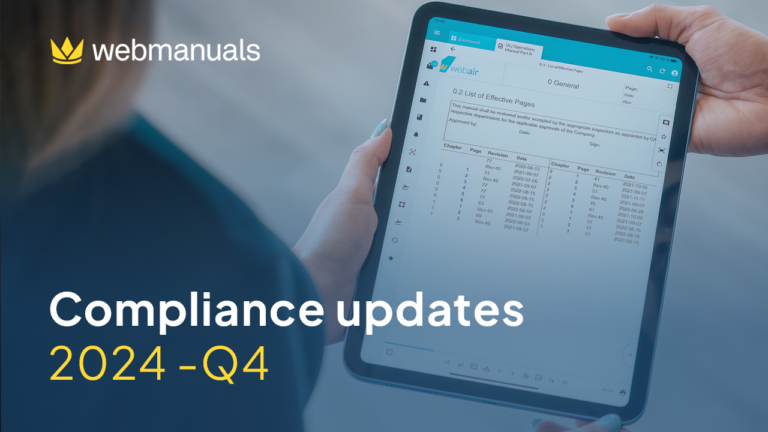At Web Manuals, we’ve been loudly making the case for widespread digitization for years. As Covid-19 restrictions are eased, technology is critical for many reasons, one of which is the increased operational challenges it has brought.
Going from 30 planes in the sky to 30 planes grounded is a problem most airlines aren’t used to facing. How do you make sure your audit process is correct when a fleet has been reduced so drastically? And for airlines pivoting to cargo flights, filling seats with pallets instead of passengers can create a host of regulatory, logistical, and safety issues – as recognized by Airbus, which has started producing cargo conversion kits for its A330 and A350 passenger jets.
On top of this, almost every airline that can has furloughed staff. Airlines are getting leaner, and workers are tasked with taking on more responsibilities than ever before. How can you meet these new operational challenges with a significantly reduced workforce?
Digital tools can alleviate the burden, and it doesn’t take a large investment to make a big difference. For example, a simple step such as digitizing aviation documents can cut the time spent by compliance managers writing, editing, and distributing manuals by up to 80%, over an airline that uses paper-based systems. Imagine what else could be achieved in that time usually taken up with lengthy admin tasks.
Using a digital platform also boosts safety by helping prevent human error. The system corrects common mistakes and reduces data entry, saving time, and improving accuracy. Even if staff levels are reduced, an automatic, efficient digital system allows businesses to stay abreast of regulations and keep crews updated.
Digitization is making a huge impact on how airlines combat the recent operational challenges posed by Covid-19. With such an unprecedented situation, which was unthinkable just months ago, any technology that organizations can use to mitigate and prepare for future changes is a critical business tactic.




